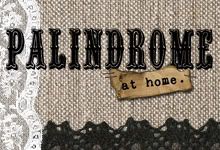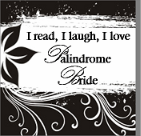Guide Books/Maps/Dictionaries we used:
Mona Winks, by Rick Steves
I bought my copy when I studied abroad in 2003. In a panicked search as we packed the morning of take off, I found it buried in one of my moving boxes. It was a honeymoon day miracle. While some of the exhibits were traveling when we were there, we still got a lot out of the book. The walking tours were all still the same (nobody moved the coliseum) and I enjoy Rick Steves' humor (although it's an acquired taste, Mr. Palindrome didn't appreciate it as much as me). If you're looking for a quick and dirty guide to some of the best European museum with a hint of funny, I think this book would really fit your needs. Sometimes, Mr. Palindrome and I wanted something a bit more academic and if I had to do it over again, I probably would have researched and bought some more art history focused books to supplement this. On my trips, I have ripped out whichever section it is that we needed. Rick actually advocates this and offers a new book to anyone who sends in $5 along with their ripped up book (although I just clarified with customer service that it only pertains to books that are still in print, which my version is not). Here's my poor little book:
Fodor's Italy 2010
Another last minute Hail Mary find, we loaded Fodor's Italy 2002 into my back pack. It's deceptively heavy. That said, we relied on it for cross referencing other guide books and restaurant recommendations. I don't know that I would buy Fodor's again, although the new ones claim they have color photos now . . .Street Smart Roma
We picked up this map in the airport at JFK because The New York Times called it "The Map to Rome." I guess the writer has never been to Rome and really never needed to know their location when walking routes that happen to fall along the crevice of the map. Otherwise, it was useful for figuring out general, cardinal directions and had a handy Subway map.
Eye Witness Travel: Florence and Tuscany
We bought this guide while we were at the train station in Rome. It was more expensive than a lot of the other books, but the color photographs and illustrations on each page really helped to guide us through the city. It breaks Tuscany into geographical areas, so it was easy to concentrate on one area at a time. My only complaint is that they lump the restaurant reviews in the back and I wish they were organized so that you knew what restaurants were near the particular site you were near.
Frommer's Milan and the Lakes: Day by Day
We also bought this at the train station in Rome. It's a smaller pocket guide style book and included several full day tours based on different interests (historical, shopping, etc.). For our purposes and since we were only in Milan for one day, we were generally well served by this book. However, if you were planning on more extensively touring the lakes, you might want something more comprehensive. Also, the maps included weren't as detailed as we needed them to be, so we found ourselves wandering around a bit looking for a particular deli recommendation.
Frommer's Italian Phrase Finder and Dictionary
Mr. Palindrome purchased this phrasebook at JFK. It was occasionally helpful (and sometimes funny - especially the intimate encounters section), but Mr. Palindrome ultimately found it inadequate in all but the simplest conversations. He was considering buying a suit and many words like "alterations" and "hem" weren't included.
Berlitz Italian Pocket Dictionary
After the suit shopping debacle, Mr. Palindrome bought the Berlitz Dictionary. He loved referencing it, especially at restaurants, much to my dismay. In fact, Mr. Palindrome reveled in looking at maps and pulling out the dictionary, marking himself as a tourist and being the source of my shame. Even though I wanted to blend in, I was fairly glad we had the dictionary to reference.
General Tips:
Advanced Booking for Museums - For the Uffizi and the Santa Maria delle Grazie, you can book tickets in advance. In the case of the Uffizi, ordering online ahead of time in March was unnecessary as our concierge was able to arrange ticket vouchers for us. The lines also weren't as long in the afternoon, so if you're unable to book ahead of time, it could work out in low season. If you want to see the Last Supper at the Santa Maria delle Grazie, you absolutely must book tickets ahead of time (3-4 months). We were also informed that we could have taken a day tour with a group for around 55 euros a piece; however, that tour left at 8:00 am and we didn't arrive in Milan until 9:30. So we were out of luck. That's the one thing that I wish we could have seen, but didn't get to.
Accommodations - Hotel rooms in Europe are generally more modest than American hotels. We stayed in two luxurious hotels and one more modest hotel. Even in the more expensive rooms, the king size beds were actually two twins pushed together. We were surprised at first, but then got used to it after checking into the third hotel and finding the same arrangement.
Shopping - We thought the best shopping was in Florence because of the multitude of leather, gold, and paper shops. In fact, we wish we had done more shopping there, but we kept waiting for good deals and the right items to knock our socks off - so we ended up missing out. In Milan and Rome, most of the shopping seemed to be very upscale designer stuff, very cheap souvenir stuff, or knock-offs. Wine was a lovely souvenir, as well as other food stuffs, just remember that meats and cheeses cannot be brought into the States per customs regulations.
Beggars - I had forgotten since I studied abroad how common begging was in the streets of major cities. It can definitely catch you off guard, especially if you're used to the suburbs. It's completely up to you how you handle the situations, but be prepared for some beggars to be quite pushy and insistent. My personal policy is to support organizations that help the homeless and not to give money on the street. It's very difficult when someone flat out asks you for money and tells you a story about their hungry child though. We did give food, but some of them asked us for money right after we had given them food. We also encountered several people at the train and subway who would help book your tickets, but then demand tips. By the end of our trip, we were much more comfortable saying no because we had seen the scams before. Since the culture is a bit different, it's just something to be aware of.
Dining - My greatest piece of advice is to be adventurous when ordering. We loved trying local delicacies and ate quite a bit of seafood that we don't eat on a regular basis (squid and octopus). When we saw food coming out of the kitchen bound for other tables that we though looked good, we asked the waiter to order us the same thing. We tried to find menus that offered prix fixe selections so that we could sample as many foods as possible.
Budget:
Euro vs. Dollar - The exchange rate might be the best it's been in several years, but at $1.40 to 1 euro, it still hurts after a while. For me, I find it useful to set a budget in euros and keep track from there. Mr. Palindrome prefers to translate the prices into dollars before deciding to buy something.
Restaurant Charges - Most restaurants charge a cover charge of 2-3 euros a person. They also charge 2-3 euros for a half liter of water. Oh and they charge you for the bread they automatically put on the table. So, just remember that when you sit down at a restaurant, it's almost 10 euros right off the bat.
Caffe Bars - Drink your coffee and eat your brioche standing at the bar. If you sit in the bar, you will be charged double to triple the prices of standing at the bar. I mean, you can sit if you're tired and just want to sit and pay more - but after we caught on to the upcharging, we just stood and drank our coffee at the bar.
Renting a Car - For about 100 euros we rented a car from Avis in Florence with a GPS and all the insurance. It was a manual as the automatic was a mid-size and would have been much more. Also, don't be afraid to ask locals for help - a kind gentlemen helped us pump petrol because we couldn't figure the machine out.
Cash - I rarely carry cash with me in the States. However, in Italy, cash is definitely needed. The subway ticket machines only took coins or bills under 5 euros. A surprising number of museums (including the L'Academia which houses the original David) only accept cash. Street vendors selling paninis and bottles of water only accept cash. We used our AMEX as often as we could for the rewards, but we had to use cash about 1/3 of the time.
Total Budget - We were very blessed by the lamb-in-laws with their gift of airfare and hotel accommodations. We set aside some wedding gift money to cover our other expenses. We were still interested in keeping a budget, but we had some flexibility. At first, Mr. Palindrome was certain that we could keep our other costs to $1000. My guess was $2000. We splurged on a few meals and renting the car to tour Tuscany. When we tallied it all at the end of the trip, we came in around $2700 which is roughly 2000 euros. For 2 people, on a 10 day trip, that breaks down to 100 euro per person per day. Outside of train transfers and the splurges I mentioned, I think we spent the most money on coffee and water! We each had several coffees throughout the day and constantly found ourselves buying water as drinking fountains were few and far between.
For those going on Italian honeymoons - Bon viaggio!



















1 comment:
I've just come across to your blog finding that it is a very interesting blog!
Post a Comment